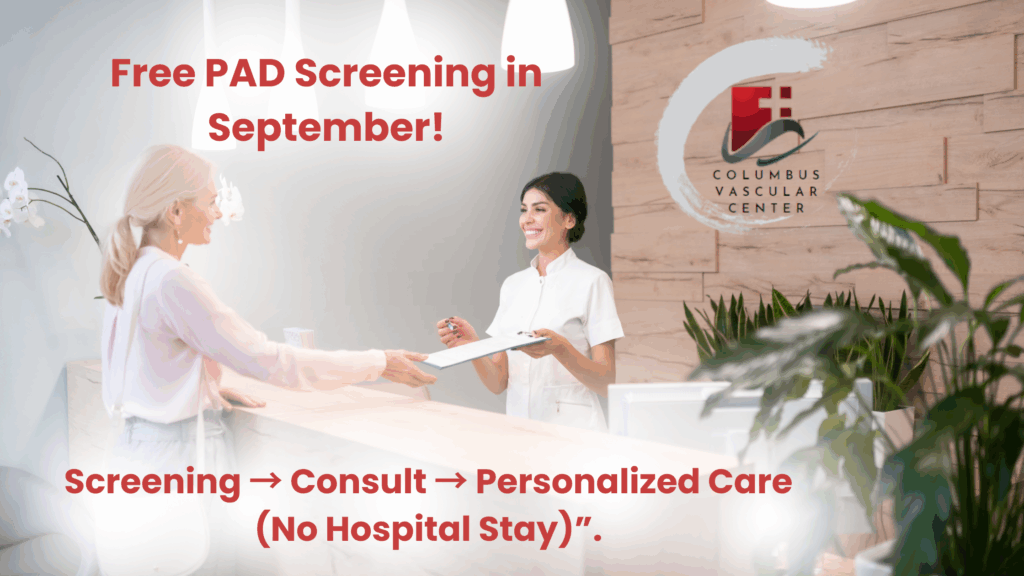26 Aug Early September: “Silent but Serious: What Is PAD?”

“Silent but Serious: Understanding PAD—When Pain Isn’t the First Warning”
Peripheral Arterial Disease (PAD) often goes under the radar—up to half of people with PAD have no symptoms at all, making it easy to ignore until it becomes dangerous.
What is PAD? (Please link this with the PAD service page:
PAD is a condition where arteries outside the heart or brain—most commonly in the legs—narrow or become blocked due to plaque buildup (atherosclerosis). This reduces blood flow and, over time, may lead to serious complications.
Why it can be silent but deadly
Many individuals (around 50%) may not notice symptoms until the disease is advanced. Even mild cases often go undetected. As PAD worsens, it significantly increases the risk of heart attack, stroke, limb loss, and even death. Critical limb-threatening ischemia may present as persistent rest pain, non-healing ulcers, or gangrene.
Risk Factors
- Smoking (the single greatest risk factor; increases risk up to 10-fold)
- Diabetes (2–4× higher risk)
- High blood pressure, high cholesterol, chronic kidney disease
- Age (more common after age 40) and ethnicity (more prevalent in people of color)
Signs & Symptoms to Watch For
- Intermittent claudication: cramping, heaviness, aching in the calf or leg that disappears with rest
- Leg or foot pain, skin ulcers, slow-healing wounds, shiny skin, hair loss, bluish or cold skin, weak or absent pulses
👉 Don’t wait until it’s too late. If you or someone you love is at risk for PAD, give us a call today at 706-221-8999 to schedule a free screening during September PAD Awareness Month. Your legs—and your heart—will thank you.

